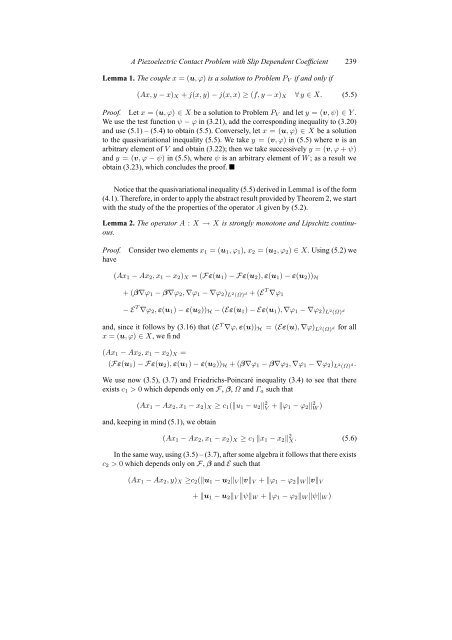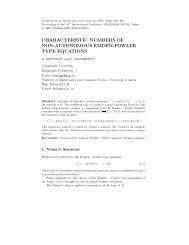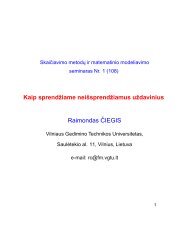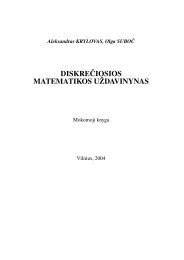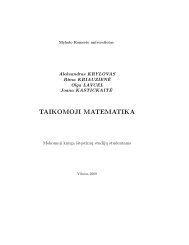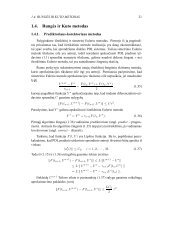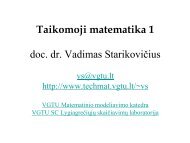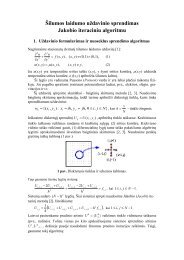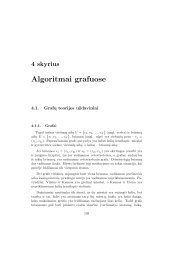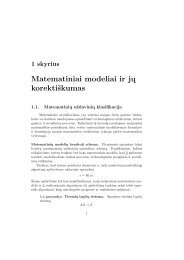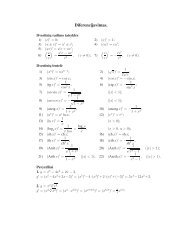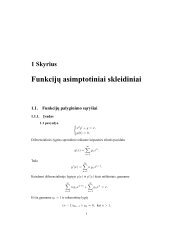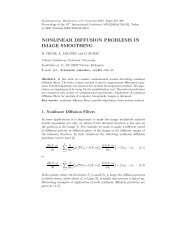a piezoelectric contact problem with slip dependent coefficient of ...
a piezoelectric contact problem with slip dependent coefficient of ...
a piezoelectric contact problem with slip dependent coefficient of ...
Create successful ePaper yourself
Turn your PDF publications into a flip-book with our unique Google optimized e-Paper software.
A Piezoelectric Contact Problem <strong>with</strong> Slip Dependent Coefficient 239Lemma 1. The couple x = (u, ϕ) is a solution to Problem P V if and only if(Ax, y − x) X + j(x, y) − j(x, x) ≥ (f, y − x) X ∀ y ∈ X. (5.5)Pro<strong>of</strong>. Let x = (u, ϕ) ∈ X be a solution to Problem P V and let y = (v, ψ) ∈ Y .We use the test function ψ − ϕ in (3.21), add the corresponding inequality to (3.20)and use (5.1) – (5.4) to obtain (5.5). Conversely, let x = (u, ϕ) ∈ X be a solutionto the quasivariational inequality (5.5). We take y = (v, ϕ) in (5.5) where v is anarbitrary element <strong>of</strong> V and obtain (3.22); then we take successively y = (v, ϕ + ψ)and y = (v, ϕ − ψ) in (5.5), where ψ is an arbitrary element <strong>of</strong> W ; as a result weobtain (3.23), which concludes the pro<strong>of</strong>. Notice that the quasivariational inequality (5.5) derived in Lemma1 is <strong>of</strong> the form(4.1). Therefore, in order to apply the abstract result provided by Theorem 2, we start<strong>with</strong> the study <strong>of</strong> the the properties <strong>of</strong> the operator A given by (5.2).Lemma 2. The operator A : X → X is strongly monotone and Lipschitz continuous.Pro<strong>of</strong>.haveConsider two elements x 1 = (u 1 , ϕ 1 ), x 2 = (u 2 , ϕ 2 ) ∈ X. Using (5.2) we(Ax 1 − Ax 2 , x 1 − x 2 ) X = (Fε(u 1 ) − Fε(u 2 ), ε(u 1 ) − ε(u 2 )) H+ (β∇ϕ 1 − β∇ϕ 2 , ∇ϕ 1 − ∇ϕ 2 ) L2 (Ω) d + (ET ∇ϕ 1− E T ∇ϕ 2 , ε(u 1 ) − ε(u 2 )) H − (Eε(u 1 ) − Eε(u 1 ), ∇ϕ 1 − ∇ϕ 2 ) L2 (Ω) dand, since it follows by (3.16) that (E T ∇ϕ, ε(u)) H = (Eε(u), ∇ϕ) L 2 (Ω) dx = (u, ϕ) ∈ X, we find(Ax 1 − Ax 2 , x 1 − x 2 ) X =for all(Fε(u 1 ) − Fε(u 2 ), ε(u 1 ) − ε(u 2 )) H + (β∇ϕ 1 − β∇ϕ 2 , ∇ϕ 1 − ∇ϕ 2 ) L 2 (Ω) d.We use now (3.5), (3.7) and Friedrichs-Poincaré inequality (3.4) to see that thereexists c 1 > 0 which depends only on F, β, Ω and Γ a such that(Ax 1 − Ax 2 , x 1 − x 2 ) X ≥ c 1 (‖u 1 − u 2 ‖ 2 V + ‖ϕ 1 − ϕ 2 ‖ 2 W )and, keeping in mind (5.1), we obtain(Ax 1 − Ax 2 , x 1 − x 2 ) X ≥ c 1 ‖x 1 − x 2 ‖ 2 X. (5.6)In the same way, using (3.5) – (3.7), after some algebra it follows that there existsc 2 > 0 which depends only on F, β and E such that(Ax 1 − Ax 2 , y) X ≥c 2 (‖u 1 − u 2 ‖ V ‖v‖ V + ‖ϕ 1 − ϕ 2 ‖ W ‖v‖ V+ ‖u 1 − u 2 ‖ V ‖ψ‖ W + ‖ϕ 1 − ϕ 2 ‖ W ‖ψ‖ W )


